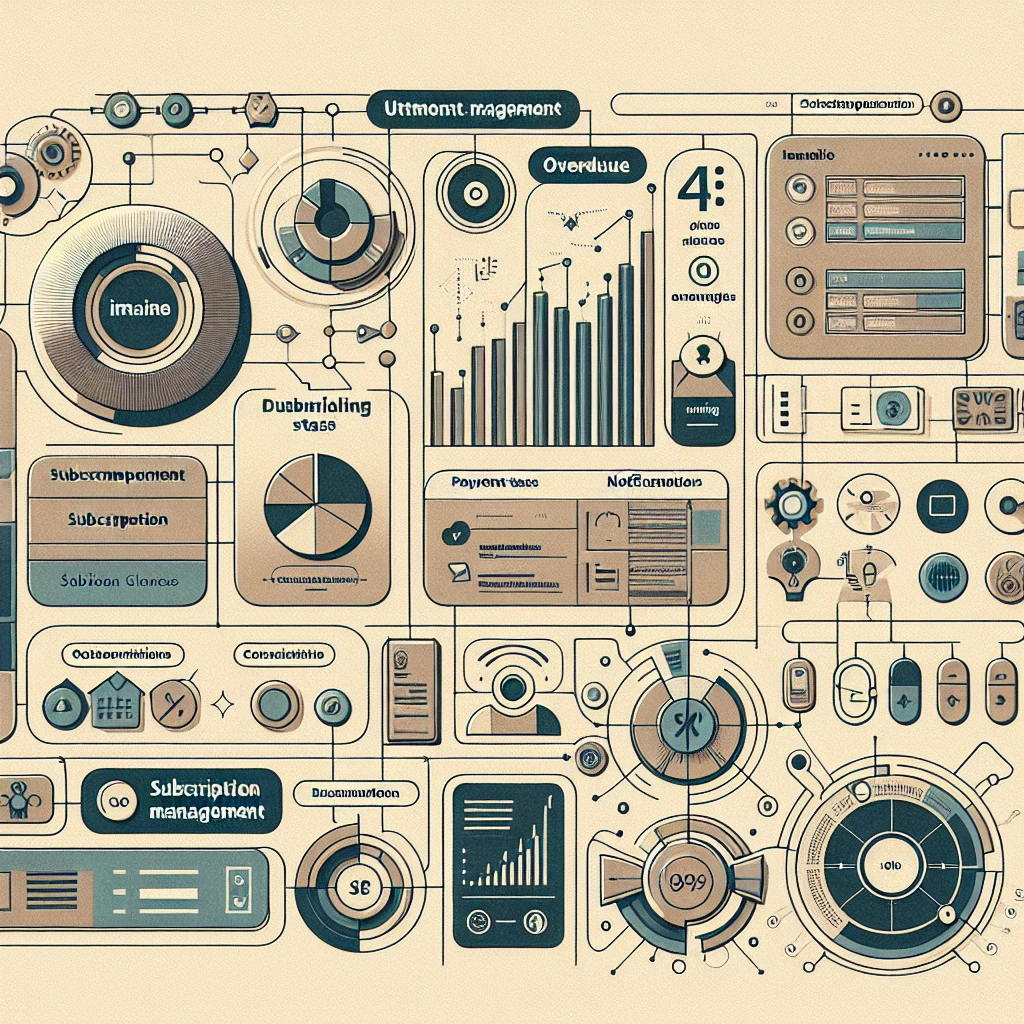Automating Billing and Subscription Management
In the dynamic landscape of modern ecommerce, automating billing and subscription management is not just a luxury—it's a strategic imperative. By streamlining these processes, businesses can unlock a plethora of benefits that contribute significantly to operational efficiency. For instance, automation reduces the likelihood of human error, ensuring that invoices are accurate and payments are processed on time. This reliability fosters trust and satisfaction among customers, bolstering retention rates.
- Automated billing systems can handle complex billing cycles with ease, adjusting to various subscription tiers and promotional rates without missing a beat.
- They also provide real-time analytics and reporting, giving businesses a granular view of their revenue streams and enabling data-driven decision-making.
- Furthermore, by integrating with accounting software, these systems can streamline revenue recognition and simplify tax preparation, aligning with tax considerations specific to subscription models.
But the magic of automation doesn't stop at mere efficiency. It extends to enhancing the customer experience. Subscribers no longer have to deal with the frustration of service interruptions due to billing issues. Instead, they enjoy seamless access to services, which in turn, reflects positively on the brand's reputation.

Choosing the Right CRM for Subscription Success
When it comes to choosing the right Customer Relationship Management (CRM) system for a subscription-based business, the stakes are high. The right CRM is like the central nervous system of your subscription operations, influencing everything from customer satisfaction to revenue growth. Here are the essential criteria to consider:
- Integration Capabilities: Your CRM should seamlessly integrate with other key business systems, such as your billing and subscription management tools, accounting software, and customer service platforms. This integration ensures that customer data flows smoothly between systems, providing a single source of truth and enabling more personalized customer interactions.
- Scalability: As your subscriber base grows, your CRM must be able to keep pace. Look for a platform that can handle an increasing volume of customers and data without a drop in performance.
- Subscription-Specific Features: Not all CRMs are built for the unique needs of subscription businesses. Choose one that offers features like subscription tracking, recurring payment reminders, and churn rate analysis to keep a pulse on the health of your subscriber base.
- Analytics and Reporting: Data is king in the subscription world. Your CRM should offer robust analytics and reporting tools that help you understand your customers' behaviors, preferences, and lifecycle stages, enabling you to make informed decisions and drive retention.
- User Experience: If your team can't navigate the CRM easily, they won't use it to its full potential. A user-friendly interface with customizable dashboards and workflows will help your team stay productive and engaged.
- Customer Support: Even the best technology is only as good as the support behind it. Ensure that your CRM provider offers reliable customer service and resources for troubleshooting.
But it's not just about the features. The right CRM aligns with your business's strategic vision and growth trajectory. It's a tool that adapts to your evolving needs, whether that's expanding into new markets or refining your subscription offerings. Moreover, it's crucial to consider the customer lifetime value and how the CRM can help maximize it through targeted marketing and retention strategies.
Remember, the goal is to build lasting relationships with your subscribers. By choosing a CRM that's tailored to the subscription model, you empower your business to deliver consistent value and cultivate a loyal customer base. In the subscription economy, where recurring revenue is the lifeblood, investing in the right CRM is not just a smart move—it's essential for long-term success.
Case Studies: Tech-Driven Subscription Models
In the landscape of subscription-based businesses, the fusion of technology and operational efficiency isn't just a trend; it's a cornerstone for success. Let's delve into some compelling case studies that epitomize the power of tech-driven subscription models.
Firstly, consider a leading streaming service that revolutionized the entertainment industry with its subscription model. By leveraging predictive analytics and machine learning, this platform offers personalized recommendations to its users, enhancing customer satisfaction and retention. The technology also streamlines content delivery and optimizes streaming quality, ensuring a seamless experience that keeps subscribers hooked.
Another inspiring example comes from a software-as-a-service (SaaS) company that has harnessed the power of cloud computing to deliver its applications. With a robust auto-scaling infrastructure, the company can effortlessly manage user spikes without compromising on performance. This tech-forward approach has not only improved customer experience but has also reduced operational costs significantly, showcasing the dual benefits of technological integration.
Moreover, a fitness subscription business has taken technology to heart by incorporating wearable tech that syncs with its digital platform. Subscribers can track their progress, access personalized workout plans, and receive real-time feedback, all of which contribute to a highly engaging and interactive customer experience. This integration of technology has not only driven customer loyalty but has also provided a wealth of data for the company to refine its offerings and marketing strategies.
These cases highlight the transformative impact of technology on subscription models. By embracing tech innovations, these companies have not only streamlined their operations but have also created a competitive edge in their respective markets. It's not just about automating processes; it's about enriching the customer journey and delivering value that resonates on a personal level.
For those managing the financials of subscription models, understanding the intricacies of financial management strategies is crucial. Technology facilitates better forecasting, accurate revenue recognition, and efficient tax planning, all of which are essential for maintaining a healthy bottom line in a subscription-based business.
In conclusion, these case studies serve as a testament to the power of leveraging technology for subscription model efficiency. They underscore the necessity for businesses to stay agile and tech-savvy, ensuring that they not only survive but thrive in the ever-evolving digital economy.







